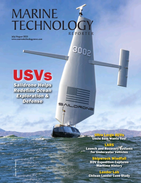Oil Rigs as Artificial Reefs
Offshore Oil platforms at some point reach an end in their production lives and are generally decommissioned. This is a costly operation costing the operators between 4 and 10 million dollars. The Department of the Interior Bureau of Ocean Energy Management, Regulation and Enforcement (BOEMRE) issued new decommissioning regulations in 2010. The regulation (NTL 2010-G05) requires wells that have not been used for the last five years to be to be permanently abandoned, temporarily abandoned, or zonally isolated within 3 years after Oct. 15, 2010. If wells are zonally isolated, operators have 2 additional years to permanently or temporarily abandon the wellhead. Plus, platforms and supporting infrastructure that has been idle for five or more years must be removed within 5 years as of the Oct. 15, 2010 effective date.
There are proponents who believe there is another use for decommissioned rigs as reef systems. Like a shipwreck or other manmade structures, oilrigs develop ecosystems with many organisms taking haven and prospering within its structure. Partial removal of the rig by leaving the legs and removing the upper areas is a less costly operation and has the added benefit of keeping the ecosystem intact. Complete removal causes displacement of the organisms and kills many creatures that have adopted this as a habitat. When ocean currents encounter a vertical structure, plankton rich upwelling can be created providing feeding grounds for smaller fish, which then bring in larger fish as the ecosystem flourishes and continues up the food chain. The structure can also provide protection for reef dwelling fish. As time progresses sponges, tunicates and corals adhere to the structure and continue to grow. In California, mussels are one of the common creatures that grow on the legs of the rigs themselves. They are filter feeders and clean the water. They are also a food supply for humans. Some enterprising businesses have developed relationships with the oil companies to be permitted the opportunity to clean the rigs and keep the mussels for sale. This approach affords a unique alternative to an otherwise costly operation.












 August 2025
August 2025



